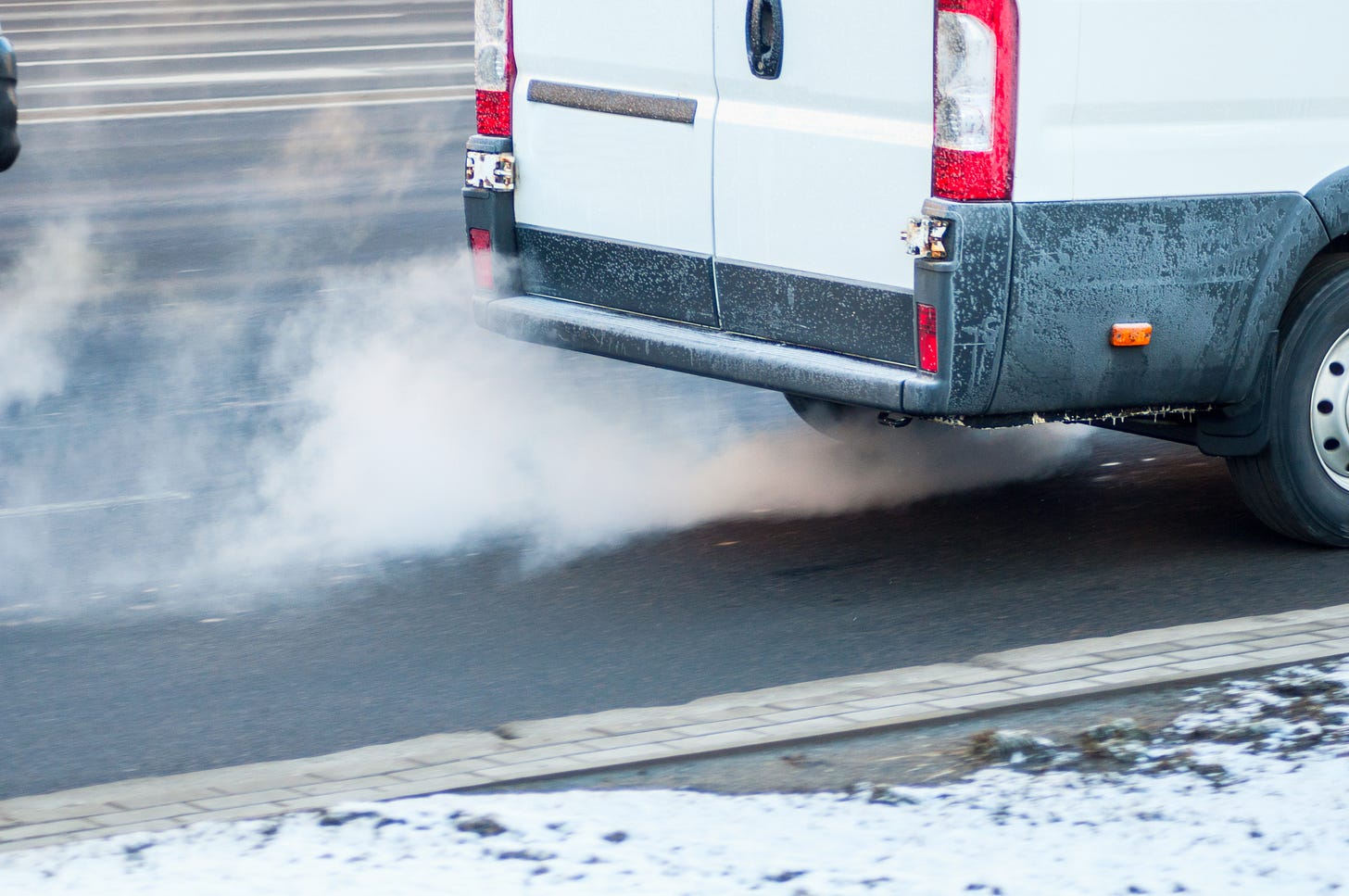The Zero Emissions Big White Elephant
As home deliveries increase, emissions from diesel vans create an urgent health crisis. Can solutions like electric vehicle incentives, charging infrastructure, and battery swapping help?
The surge in popularity of home delivery services for everyday goods in recent years has transformed the way we shop and receive essential supplies, further accelerated by the global pandemic. While the benefits of home delivery are undeniable, they come at a significant cost to the environment and public health. The increased reliance on combustion engine vans for these deliveries has led to a troubling surge in polluting emissions, exacerbating the persistent issue of air quality in urban areas.
The Rising Emissions from Delivery Vans
Over the past few decades, emissions from light goods vehicles have surged by a disconcerting 65% since 19901. This increase in emissions underscores a troubling reality: the delivery vans that bring us our goods are becoming major contributors to air pollution in our cities. In fact, these vans are now responsible for a staggering 14% of nitrogen oxide (NOx) emissions stemming from road transportation2. As we reflect on these statistics, it becomes clear that urgent action is needed to address the environmental impact of our evolving shopping habits.
A Complicated Focus: Passenger Vehicles vs. Commercial Fleets
Considering the above, An intriguing question arises:
Why has the focus primarily been on passenger vehicles, while the impact of commercial delivery vans remains a significant concern?
This query, though lacking a straightforward answer, prompts us to explore potential solutions to the complex challenges posed by commercial vehicle emissions.
In many ways, the hesitancy surrounding the mainstream adoption of electric vehicles by you and me applies even more intensely to fleet and van owners. The hurdles are magnified when we consider the specific needs and demands of commercial operations.
Charging Infrastructure Lags for Vans
One crucial factor in the slower adoption of electric vans is the need for a robust charging infrastructure to support widespread use. While progress has been made in establishing charging stations, particularly for personal vehicles, the infrastructure for larger commercial vans is reliant on the companies themselves and may not warrant the upfront cost to install and sustain an entire fleet of delivery vehicles. This, coupled with charging times for electric vans being notably longer than filling up with combustible fuel, can severely affect business bottom lines and total cost of ownership calculations.
Range and Payload Limitations
One other significant obstacle that everyone who has heard of an EV knows about is their “limited” driving range. Although new passenger EVs on the market now offer more than enough range, there is still a hypothesis in the commercial industry that electric vans don’t have enough range to cover substantial distances during delivery services. And this "range anxiety" can discourage businesses from transitioning to electric vans.
Additionally, the weight of batteries in electric vans affects the overall payload capacity, and the space required to accommodate these batteries and e-axles can further limit the cargo capacity, making electric vans less suitable for certain types of deliveries, or types of van such as ambulances and minibuses which need to maximize their payload.
Navigating a Sustainable Future
The rise of home delivery services has undoubtedly reshaped our shopping habits, offering unparalleled convenience. However, the environmental consequences of this shift cannot be ignored. As we confront the pressing challenge of mitigating emissions from commercial delivery vans, it is imperative that stakeholders across industries collaborate to find innovative solutions
Exploring Potential Solutions
Governments must provide incentives and policies that support the adoption of electric vans, especially in commercial fleets. Alongside these incentives and policies, a rethink on whether full electric or hybrid is the way to go for vans can help overcome some of the logistical obstacles in the short to medium term.
Industry players must invest in advancing technology and creative solutions to enhance driving ranges and charging efficiency. Things like shared charging infrastructure, retrofitting and battery swapping are all on the table as solutions. For example, commercial vehicle manufacturer Iveco has launched an electric van that uses an easily swapped, cassette-style battery. Allowing users to retrospectively remove or add elements to the modular battery pack or swap in fully charged batteries, similar to the technique pioneered by NIO.
While the road ahead is undoubtedly complex, the urgency of reducing emissions from delivery vans is undeniable. By collectively striving for innovation, sustainable practices, and creative solutions, we can transform the convenience of home delivery, creating cleaner and healthier urban environments for generations to come and making the transition to electric vehicles both viable and attractive for fleet operators and managers.
Delivering a Greener Future – Urban Transport Group
Real-world CO2 and NOX emissions from refrigerated vans – National Library of Medicine








🤣🤣🤣🤣